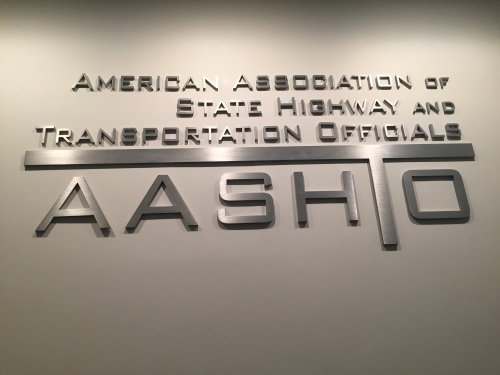The American Association of State Highway and Transportation Officials recently provided comments to the Environmental Protection Agency on a notice of proposed rulemaking published in October 2023 that seeks to update its “Guideline on Air Quality Models; Enhancements to the AERMOD Dispersion Modeling System.”
[Above photo by the EPA]
The EPA’s “AERMOD Modeling System” is an air quality measurement system that calculates the dispersion of air pollutants in a given area. That guideline is used by the EPA, as well as other federal, state, territorial, and local air quality agencies, to prepare and review pre-construction permit applications. It also serves as a means by which “national consistency” is maintained in air quality analyses for regulatory activities under Clean Air Act rules.

AASHTO recommended in its letter that EPA fund and implement an “enhanced model evaluation process” or EMEP for transportation projects, consistent with the findings of the National Cooperative Highway Research Program or NCHRP 25-55 study and the 2007 National Research Council report on “Models in Environmental Regulatory Decision Making.”
“The establishment of an EMEP for transportation is crucial because the EPA transportation conformity rule requirements [that] mandate modeling of specific project types for inhalable particulate matter (PM),” AASHTO said in its letter.
“These models were not specifically or fully validated due to a lack of representative but costly and complex field data,” the group noted. “The margin of error in PM analyses is typically small, given high background concentrations relative to the National Ambient Air Quality Standards (NAAQS). This further escalates the need for accuracy in regulatory applications of the models.”
In its letter, AASHTO recommended that EPA use EMEPs in the transportation sector to help verify the ability of the regulatory modeling chain of traffic, emission, and dispersion modeling to demonstrate compliance with the applicable NAAQS and regulatory tests to a statistical confidence.
Specifically, AASHTO recommends the use of EMEPs for all transportation applications requiring modeling for transportation, including high volume freeways, congested intersections, and terminals – including all representative roadway configurations, operating conditions, and settings (urban/rural) for those project types as appropriate. The organization also recommended that EPA augment the current evaluation criteria for accuracy to include a measure or measures based on near-road concentrations that are the highest and therefore most relevant to the determination of design values used in the regulatory tests for transportation projects
Finally, AASHTO recommended to the EPA that the transportation sector continue to follow existing agency guidance for project-level hot-spot analyses that addresses background concentrations for these analyses. However, the organization emphasized that EPA clarify whether the new proposed guidance applies to transportation sources and, if so, indicate which sections specifically apply and how they should be coordinated with existing EPA hot-spot guidance for transportation sources.
 Top Stories
Top Stories
USDOT Makes $1.5B Worth of BUILD Grants Available
December 19, 2025 Top Stories
Top Stories

